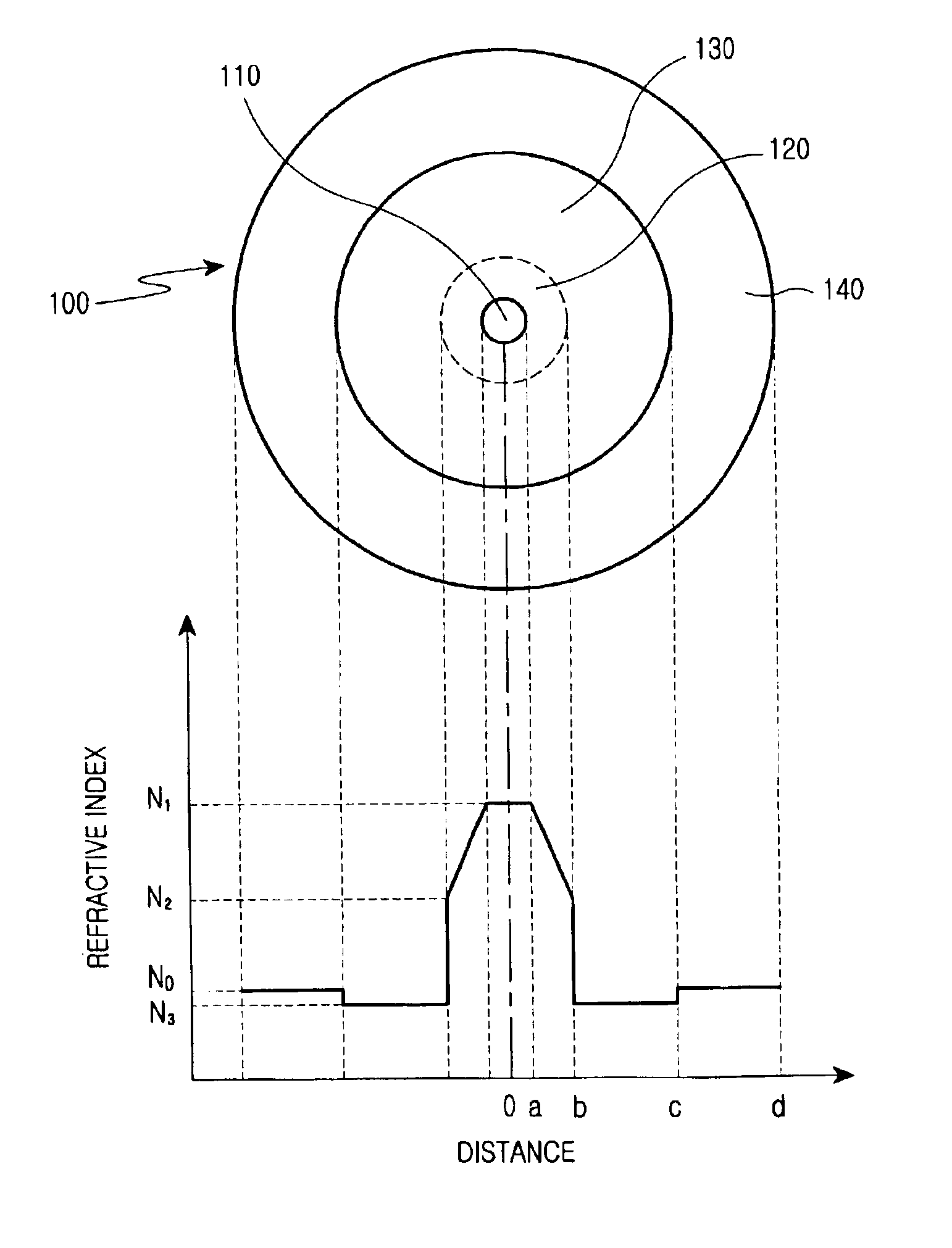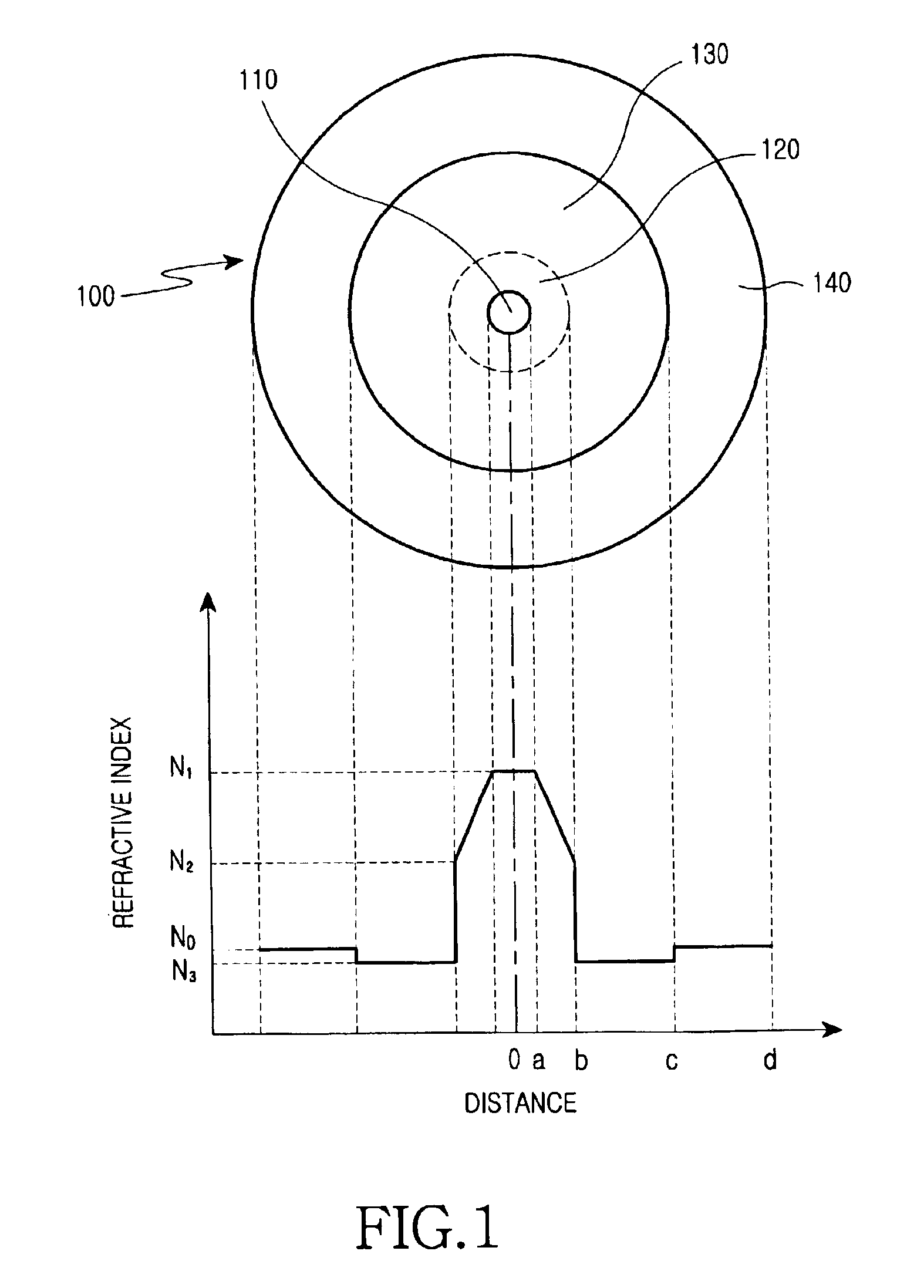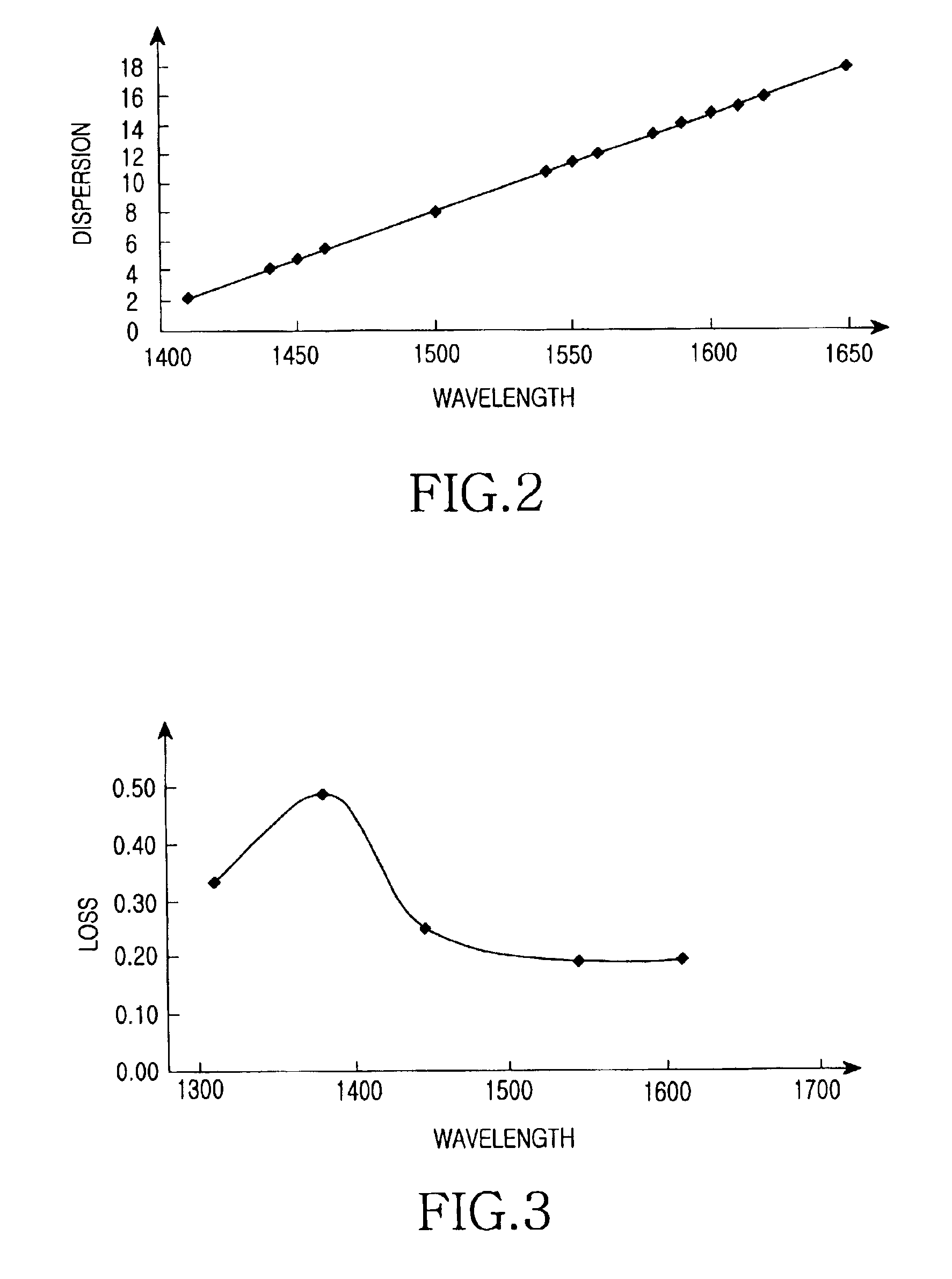Dispersion-controlled optical fiber
- Summary
- Abstract
- Description
- Claims
- Application Information
AI Technical Summary
Benefits of technology
Problems solved by technology
Method used
Image
Examples
Embodiment Construction
[0023]Hereinafter, preferred embodiments of the present invention will be described in detail with reference to the accompanying drawings. For the purposes of clarity and simplicity, a detailed description of known functions and configurations incorporated herein will be omitted as it may make the subject matter of the present invention unclear.
[0024]FIG. 1 shows the construction and distribution of the refractive indices of a dispersion-controlled optical fiber in accordance with a preferred embodiment of the present invention. As shown in FIG. 1, the dispersion-controlled optical fiber 100 consists of a center core 110, an upper core 120, a minutely depressed refractive index region 130, and a cladding 140.
[0025]The center core 110 consists of silica and has a radius, a. In the embodiment, the center core 110 is doped with a predetermined amount of germanium for tuning its refractive index to N1.
[0026]The upper core 120 has an internal radius of a and an external radius of b, and ...
PUM
 Login to View More
Login to View More Abstract
Description
Claims
Application Information
 Login to View More
Login to View More - R&D
- Intellectual Property
- Life Sciences
- Materials
- Tech Scout
- Unparalleled Data Quality
- Higher Quality Content
- 60% Fewer Hallucinations
Browse by: Latest US Patents, China's latest patents, Technical Efficacy Thesaurus, Application Domain, Technology Topic, Popular Technical Reports.
© 2025 PatSnap. All rights reserved.Legal|Privacy policy|Modern Slavery Act Transparency Statement|Sitemap|About US| Contact US: help@patsnap.com



